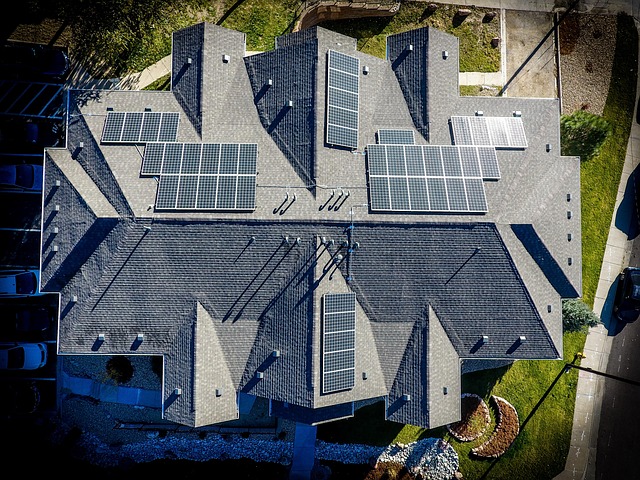Empowering Communities Through Sustainable Energy Solutions
In recent years, the conversation surrounding energy consumption and production has shifted dramatically. A growing recognition of the environmental impacts of traditional fossil fuels has led communities worldwide to champion sustainable energy solutions. These initiatives not only contribute to environmental conservation but also play a crucial role in empowering communities, driving economic growth, and enhancing the quality of life. This article delves into the importance of sustainable energy solutions for community empowerment and examines various approaches and examples worldwide.
Understanding Sustainable Energy Solutions
Sustainable energy refers to energy that meets the needs of the present without compromising the ability of future generations to meet their own needs. Sources of sustainable energy include solar, wind, hydroelectric, geothermal, and biomass. The benefits of these alternatives extend beyond environmental protection; they offer social, economic, and health benefits that can uplift entire communities.
The Environmental Impact
One of the most compelling reasons to shift towards sustainable energy is the reduction of environmental degradation. Traditional energy sources, such as coal and oil, are responsible for significant greenhouse gas emissions that contribute to climate change. In contrast, sustainable energy solutions produce little to no emissions, leading to cleaner air and a healthier environment.
Social Benefits
Communities that adopt sustainable energy solutions often experience enhanced social cohesion. Projects that involve local participation foster a sense of ownership and pride among community members. Furthermore, sustainable energy initiatives can address energy poverty, bringing electricity to remote areas and improving the quality of life for inhabitants. Access to reliable energy facilitates communication, education, and healthcare services, creating a ripple effect that benefits entire communities.
Economic Opportunities
Investing in sustainable energy solutions offers economic benefits that can stimulate local economies. Renewable energy projects often require local labor for installation and maintenance, which creates job opportunities. Additionally, communities can become energy independent by producing their own energy, reducing reliance on external sources and insulating themselves from fluctuating energy prices.
Community-Led Renewable Energy Initiatives
Globally, numerous examples illustrate how communities are taking the lead in adopting renewable energy solutions. These initiatives range from small-scale projects to larger community-driven installations. The following case studies highlight successful implementations of sustainable energy solutions by local communities.
Solar Energy Cooperatives
In many regions, community members have banded together to form solar energy cooperatives. These cooperatives allow individuals to invest in solar energy systems collectively. Through shared ownership, members benefit from lower energy costs and the environmental advantages of clean energy production.
An example can be seen in several states in the United States, where communities have initiated solar farms. These farms are funded by local investors and provide electricity to local homes, significantly reducing monthly energy bills. This model empowers individuals and provides a clear pathway to sustainable energy independence.
Wind Energy Projects
Wind energy has gained considerable traction as a viable renewable resource, especially in areas with high wind potential. Communities worldwide are establishing wind farms, creating jobs while generating clean energy. Local benefits may include leasing land for turbines, which provides additional income for farmers and landowners.
In countries like Denmark, community-owned wind farms have become a significant part of the energy landscape. Citizens invest in the project, and in return, they receive dividends based on energy production. This model has demonstrated that large-scale sustainability projects can be both economically viable and community-focused.
Microgrids
Microgrid systems enable localized energy production and distribution, often integrating renewable energy sources like solar and wind. These systems can operate independently from the national grid, providing energy resilience to communities, especially those in remote or disaster-prone areas.
For example, several indigenous communities in the United States have developed microgrids powered by solar and wind energy. These systems not only supply reliable electricity but also help preserve cultural heritage and traditional practices by bringing power to local community centers and schools.
Challenges and Solutions
While the benefits of sustainable energy solutions are significant, challenges still exist. These can include initial installation costs, regulatory hurdles, and technical know-how. However, communities are finding innovative solutions to overcome these obstacles.
Financing Mechanisms
The initial investment needed for sustainable energy projects can be daunting. However, various financing mechanisms have been developed to make these projects more accessible. Community bonds, grants, and crowdfunding have emerged as effective ways to raise funds for renewable energy initiatives.
Education and Training
Investment in education and training is vital for cultivating local expertise in sustainable energy technologies. By providing community members with necessary skills, such as solar panel installation or wind turbine maintenance, local economies can thrive while reducing dependence on external contractors.
Policy Support
Supportive government policies also play an essential role in the successful implementation of sustainable energy solutions. Incentives, such as tax credits and subsidies, can encourage both communities and individuals to invest in renewable energy. Additionally, streamlined permitting processes can reduce red tape, making it easier for communities to realize their projects.
The Future of Sustainable Energy in Communities
The progression towards sustainable energy solutions is likely to continue, fueled by technological advancements and increasing public awareness of climate change. Communities that embrace these solutions will not only reduce their carbon footprint but also create a blueprint for others to follow. The path to energy independence can serve as a model of resilience, empowerment, and sustainability.
Integrating Sustainable Practices
Communities can further enhance their initiatives by integrating sustainable practices beyond energy production. This can include sustainable transportation options, efficient waste management, and water conservation strategies. A holistic approach to sustainability ensures the long-term success of energy initiatives and fosters overall community well-being.
Collaborative Efforts
Collaboration will be instrumental in accelerating the transition to sustainable energy. Various stakeholders, including government agencies, non-profits, and private sector actors, should work together to create frameworks that support community-led initiatives. By sharing knowledge, resources, and best practices, communities can learn from one another and scale successful projects effectively.
Conclusion
Empowering communities through sustainable energy solutions is not just an innovative idea; it is a vital step toward creating a more equitable and environmentally friendly future. By investing in renewable energy, communities are not only addressing the urgent need for cleaner energy but are also fostering economic growth, social cohesion, and resilience. As we look to the future, it is clear that sustainable energy solutions will play a crucial role in shaping empowered, thriving communities worldwide. Together, through collaboration and commitment, we can build a landscape where sustainable energy is the norm, not the exception.



